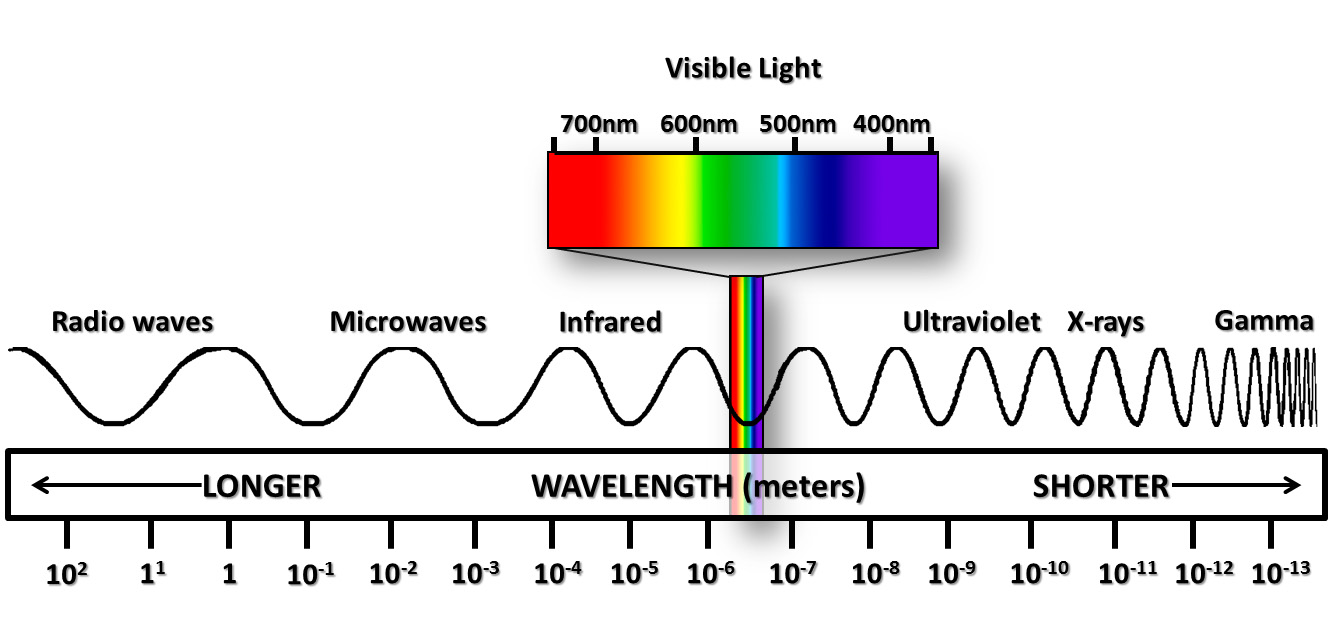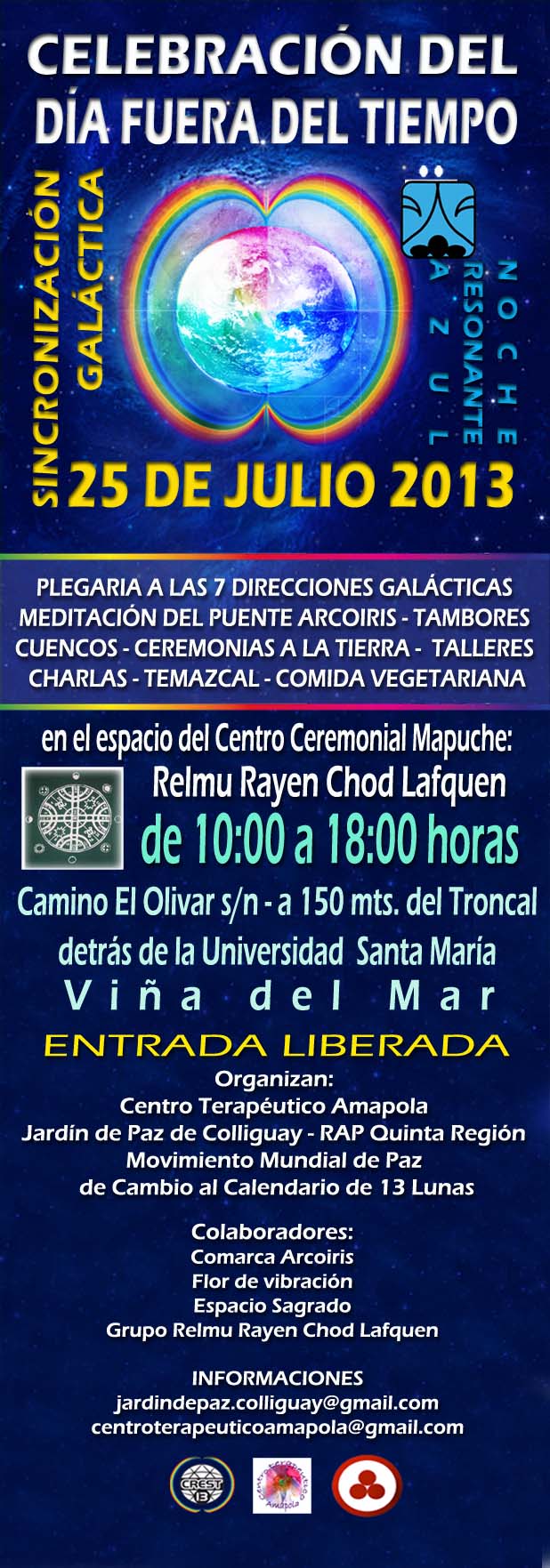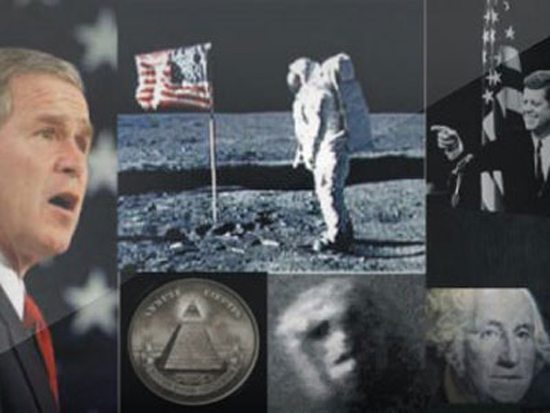|
|
MARIA MAGDALENA - SANTO GRIAL: VIKING PROYECT TEST GENERAL RELATIVITY, NOVEMBER 25 1976 MARS MARY MAGDALENE
Choose another message board |
|
Reply |
Message 1 of 21 on the subject |
|
Viking Project tests general relativity, November 25, 1976
The Viking spacecraft arrived at Mars in the summer of 1976 and passed through superior conjunction on November 25, as Mars passed directly behind the Sun as seen from Earth. This provided researchers the opportunity to use the spacecraft in an experiment to test general relativity.

This image shows the surface of Mars looking across the Viking 2 Lander. (Source: NASA)
After completing the primary missions, the Viking continuation mission objectives included a radio science solar conjunction relativity experiment. Scientists began an experiment that used the landers and orbiters as transponders, sending radio signals to the lander on Mars and instructing the lander to the return signals. The round-trip travel times of the radio signals going from Earth to the Viking landers and orbiters were measured.
Using dual-band, one-way ranging allowed estimation of the contribution of the solar-corona plasma to the echo delays obtained from ranging to the spacecraft.
The data confirmed the Shapiro time delay effect, which states that radar signals passing near a massive object take slightly longer to travel to a target and longer to return than they would if the mass of the object were not present.
 A report, “Viking relativity experiment: verification of signal retardation by solar gravity” published in 1979 by researchers at MIT and the Jet Propulsion Laboratory, analyzed 14 months of data obtained from radio ranging to Viking to verify the prediction of the general theory of relativity. A report, “Viking relativity experiment: verification of signal retardation by solar gravity” published in 1979 by researchers at MIT and the Jet Propulsion Laboratory, analyzed 14 months of data obtained from radio ranging to Viking to verify the prediction of the general theory of relativity.
Published by Albert Einstein in 1916, the general theory of relativity predicted that the round-trip or echo delays of light signals traveling between the Earth and Mars would be increased by the direct effect of solar gravity. The theory included gravitational time dilation, where time passes differently in regions of different gravitational potential.
NASA has continued to test general relativity, most recently with the Cassini space probe (see a NASA artist rending of its testing at right) and Gravity Probe B, which also confirmed the theory.
Related articles:
For more moments in tech history, see this blog. EDN strives to be historically accurate with these postings. Should you see an error, please notify us.
Editor’s note: This article was originally posted on November 25, 2013 and edited on November 25, 2019.
https://www.edn.com/viking-project-tests-general-relativity-november-25-1976/ |
|
|
|
Reply |
Message 7 of 21 on the subject |
|
por II Shapiro · 1977 · Mencionado por 117 — Measurements of the round-trip time of flight of radio signals transmitted from the earth to the Viking spacecraft are being analyzed to test the predictions ...
22 oct 2024 — The predicted general relativistic effect of solar gravity on the round-trip times of electromagnetic signals traveling between earth and Mars ...
por RD Reasenberg · 1979 · Mencionado por 742 — Abstract. Analysis of 14 months of data obtained from radio ranging to the Viking spacecraft verified, to an estimated accuracy of 0.1%, the prediction of ...
por RD Reasenberg · 1982 · Mencionado por 4 — The predicted general relativistic effect of solar gravity on the round-trip times of electromagnetic signals traveling between Earth and Mars has been ...
por RD Reasenberg · 1979 · Mencionado por 742 — Printed in U.S.A. VIKING RELATIVITY EXPERIMENT: VERIFICATION OF SIGNAL RETARDATION BY SOLAR GRAVITY R. D. REASENBERG, I. I. SHAPIRO, P. E. MACNEIL, AND ...
21 nov 2024 — Measurements of the round-trip time of flight of radio signals transmitted from the earth to the Viking spacecraft are being analyzed to test ...
por RD Reasenberg · 1982 · Mencionado por 4 — New results from the Viking relativity experiment The predicted general relativistic effect of solar gravity on the round-trip times of electromagnetic ...
por II Shapiro · 1977 · Mencionado por 117 — Abstract. Measurements of the round-trip time of flight of radio signals transmitted from the earth to the Viking spacecraft are being analyzed ...
7 ene 1977 — The two Viking spacecraft on the planet Mars and the two in orbit around Mars have confirmed Einstein's Theory of relativity.
25 nov 1976 — The theory included gravitational time dilation, where time passes differently in regions of different gravitational potential. NASA has ...
|
|
|
|
Reply |
Message 8 of 21 on the subject |
|
Analysis of 14 months of data obtained from radio ranging to the Viking spacecraft verified, to an estimated accuracy of 0.1%, the prediction of the general theory of relativity that the round-trip times of light signals traveling between the earth and Mars are increased by the direct effect of solar gravity. The corresponding value for the metric parameter gamma is 1.000 plus or minus 0.002, where the quoted uncertainty, twice the formal standard deviation, allows for possible systematic errors.
|
|
|
|
Reply |
Message 9 of 21 on the subject |
|
|
|
|
Reply |
Message 10 of 21 on the subject |
|
24.4 Time in General Relativity
Learning Objectives
By the end of this section, you will be able to:
- Describe how Einsteinian gravity slows clocks and can decrease a light wave’s frequency of oscillation
- Recognize that the gravitational decrease in a light wave’s frequency is compensated by an increase in the light wave’s wavelength—the so-called gravitational redshift—so that the light continues to travel at constant speed
General relativity theory makes various predictions about the behavior of space and time. One of these predictions, put in everyday terms, is that the stronger the gravity, the slower the pace of time. Such a statement goes very much counter to our intuitive sense of time as a flow that we all share. Time has always seemed the most democratic of concepts: all of us, regardless of wealth or status, appear to move together from the cradle to the grave in the great current of time.
But Einstein argued that it only seems this way to us because all humans so far have lived and died in the gravitational environment of Earth. We have had no chance to test the idea that the pace of time might depend on the strength of gravity, because we have not experienced radically different gravities. Moreover, the differences in the flow of time are extremely small until truly large masses are involved. Nevertheless, Einstein’s prediction has now been tested, both on Earth and in space.
The Tests of Time
An ingenious experiment in 1959 used the most accurate atomic clock known to compare time measurements on the ground floor and the top floor of the physics building at Harvard University. For a clock, the experimenters used the frequency (the number of cycles per second) of gamma rays emitted by radioactive cobalt. Einstein’s theory predicts that such a cobalt clock on the ground floor, being a bit closer to Earth’s center of gravity, should run very slightly slower than the same clock on the top floor. This is precisely what the experiments observed. Later, atomic clocks were taken up in high-flying aircraft and even on one of the Gemini space flights. In each case, the clocks farther from Earth ran a bit faster. While in 1959 it didn’t matter much if the clock at the top of the building ran faster than the clock in the basement, today that effect is highly relevant. Every smartphone or device that synchronizes with a GPS must correct for this (as we will see in the next section) since the clocks on satellites will run faster than clocks on Earth.
The effect is more pronounced if the gravity involved is the Sun’s and not Earth’s. If stronger gravity slows the pace of time, then it will take longer for a light or radio wave that passes very near the edge of the Sun to reach Earth than we would expect on the basis of Newton’s law of gravity. (It takes longer because spacetime is curved in the vicinity of the Sun.) The smaller the distance between the ray of light and the edge of the Sun at closest approach, the longer will be the delay in the arrival time.
In November 1976, when the two Viking spacecraft were operating on the surface of Mars, the planet went behind the Sun as seen from Earth as shown in Figure 1. Scientists had preprogrammed Viking to send a radio wave toward Earth that would go extremely close to the outer regions of the Sun. According to general relativity, there would be a delay because the radio wave would be passing through a region where time ran more slowly. The experiment was able to confirm Einstein’s theory to within 0.1%.
Time Delays for Radio Waves near the Sun.
![Time Delays for Radio Waves near the Sun. The curvature of spacetime near the Sun is shown in this diagram with the Sun at the bottom of a sag (similar to that illustrated in Figure 24_03_Spacetime]). The Viking spacecraft is at upper right, the Earth is at lower left and the Sun is between the two. The radio signal from Viking is drawn as a red arrow that goes down into the “sag”, and back out on its way to Earth, thus travelling a greater distance than if the Sun were not there.](https://pressbooks.bccampus.ca/astronomy1105/wp-content/uploads/sites/235/2017/08/OSC_Astro_24_05_Waves-1.jpg) Figure 1. Radio signals from the Viking lander on Mars were delayed when they passed near the Sun, where spacetime is curved relatively strongly. In this picture, spacetime is pictured as a two-dimensional rubber sheet. Figure 1. Radio signals from the Viking lander on Mars were delayed when they passed near the Sun, where spacetime is curved relatively strongly. In this picture, spacetime is pictured as a two-dimensional rubber sheet.
Gravitational Redshift
What does it mean to say that time runs more slowly? When light emerges from a region of strong gravity where time slows down, the light experiences a change in its frequency and wavelength. To understand what happens, let’s recall that a wave of light is a repeating phenomenon—crest follows crest with great regularity. In this sense, each light wave is a little clock, keeping time with its wave cycle. If stronger gravity slows down the pace of time (relative to an outside observer), then the rate at which crest follows crest must be correspondingly slower—that is, the waves become less frequent.
To maintain constant light speed (the key postulate in Einstein’s theories of special and general relativity), the lower frequency must be compensated by a longer wavelength. This kind of increase in wavelength (when caused by the motion of the source) is what we called a redshift in Radiation and Spectra. Here, because it is gravity and not motion that produces the longer wavelengths, we call the effect a gravitational redshift.
The advent of space-age technology made it possible to measure gravitational redshift with very high accuracy. In the mid-1970s, a hydrogen maser, a device akin to a laser that produces a microwave radio signal at a particular wavelength, was carried by a rocket to an altitude of 10,000 kilometers. Instruments on the ground were used to compare the frequency of the signal emitted by the rocket-borne maser with that from a similar maser on Earth. The experiment showed that the stronger gravitational field at Earth’s surface really did slow the flow of time relative to that measured by the maser in the rocket. The observed effect matched the predictions of general relativity to within a few parts in 100,000.
These are only a few examples of tests that have confirmed the predictions of general relativity. Today, general relativity is accepted as our best description of gravity and is used by astronomers and physicists to understand the behavior of the centers of galaxies, the beginning of the universe, and the subject with which we began this chapter—the death of truly massive stars.
Relativity: A Practical Application
By now you may be asking: why should I be bothered with relativity? Can’t I live my life perfectly well without it? The answer is you can’t. Every time a pilot lands an airplane or you use a GPS to determine where you are on a drive or hike in the back country, you (or at least your GPS-enabled device) must take the effects of both general and special relativity into account.
GPS relies on an array of 24 satellites orbiting the Earth, and at least 4 of them are visible from any spot on Earth. Each satellite carries a precise atomic clock. Your GPS receiver detects the signals from those satellites that are overhead and calculates your position based on the time that it has taken those signals to reach you. Suppose you want to know where you are within 50 feet (GPS devices can actually do much better than this). Since it takes only 50 billionths of a second for light to travel 50 feet, the clocks on the satellites must be synchronized to at least this accuracy—and relativistic effects must therefore be taken into account.
The clocks on the satellites are orbiting Earth at a speed of 14,000 kilometers per hour and are moving much faster than clocks on the surface of Earth. According to Einstein’s theory of relativity, the clocks on the satellites are ticking more slowly than Earth-based clocks by about 7 millionths of a second per day. (We have not discussed the special theory of relativity, which deals with changes when objects move very fast, so you’ll have to take our word for this part.)
The orbits of the satellites are 20,000 kilometers above Earth, where gravity is about four times weaker than at Earth’s surface. General relativity says that the orbiting clocks should tick about 45 millionths of a second faster than they would on Earth. The net effect is that the time on a satellite clock advances by about 38 microseconds per day. If these relativistic effects were not taken into account, navigational errors would start to add up and positions would be off by about 7 miles in only a single day.
Key Concepts and Summary
General relativity predicts that the stronger the gravity, the more slowly time must run. Experiments on Earth and with spacecraft have confirmed this prediction with remarkable accuracy. When light or other radiation emerges from a compact smaller remnant, such as a white dwarf or neutron star, it shows a gravitational redshift due to the slowing of time.
Glossary
- gravitational redshift
- an increase in wavelength of an electromagnetic wave (light) when propagating from or near a massive object
https://pressbooks.bccampus.ca/astronomy1105/chapter/24-4-time-in-general-relativity/ |
|
|
|
Reply |
Message 11 of 21 on the subject |
|
|
|
|
Reply |
Message 12 of 21 on the subject |
|
|
|
|
Reply |
Message 13 of 21 on the subject |
|
|
|
|
Reply |
Message 14 of 21 on the subject |
|
|
|
|
Reply |
Message 15 of 21 on the subject |
|
El proyecto Viking pone a prueba la relatividad general, 25 de noviembre de 1976
La sonda Viking llegó a Marte en el verano de 1976 y atravesó una conjunción superior el 25 de noviembre, cuando Marte pasó directamente detrás del Sol visto desde la Tierra. Esto brindó a los investigadores la oportunidad de utilizar la sonda en un experimento para probar la relatividad general.

Esta imagen muestra la superficie de Marte vista desde el módulo de aterrizaje Viking 2. (Fuente: NASA)
Después de completar las misiones principales, los objetivos de la misión de continuación de Viking incluyeron un experimento de radiociencia de relatividad de conjunción solar. Los científicos comenzaron un experimento que utilizó los módulos de aterrizaje y los orbitadores como transpondedores, enviando señales de radio al módulo de aterrizaje en Marte y dando instrucciones al módulo de aterrizaje para que respondiera las señales. Se midieron los tiempos de viaje de ida y vuelta de las señales de radio que iban desde la Tierra hasta los módulos de aterrizaje y los orbitadores Viking.
El uso de medición de distancia unidireccional de banda dual permitió estimar la contribución del plasma de la corona solar a los retrasos del eco obtenidos a partir de la medición de distancia a la nave espacial.
Los datos confirmaron el efecto de retardo temporal de Shapiro, que establece que las señales de radar que pasan cerca de un objeto masivo tardan ligeramente más en viajar hasta un objetivo y más tiempo en regresar que si la masa del objeto no estuviera presente.
 Un informe, “ Experimento de relatividad de Viking: verificación del retardo de la señal por la gravedad solar ”, publicado en 1979 por investigadores del MIT y del Laboratorio de Propulsión a Chorro, analizó 14 meses de datos obtenidos por radiotelemetría de Viking para verificar la predicción de la teoría general de la relatividad. Un informe, “ Experimento de relatividad de Viking: verificación del retardo de la señal por la gravedad solar ”, publicado en 1979 por investigadores del MIT y del Laboratorio de Propulsión a Chorro, analizó 14 meses de datos obtenidos por radiotelemetría de Viking para verificar la predicción de la teoría general de la relatividad.
Publicada por Albert Einstein en 1916, la teoría general de la relatividad predijo que los retrasos de ida y vuelta o ecos de las señales de luz que viajan entre la Tierra y Marte se verían incrementados por el efecto directo de la gravedad solar. La teoría incluía la dilatación del tiempo gravitacional, según la cual el tiempo transcurre de manera diferente en regiones con diferente potencial gravitacional.
La NASA ha seguido poniendo a prueba la relatividad general, más recientemente con la sonda espacial Cassini (ver una representación artística de la NASA de sus pruebas a la derecha ) y con Gravity Probe B, que también confirmó la teoría.
Artículos relacionados:
Para conocer más momentos de la historia de la tecnología, consulte este blog . EDN se esfuerza por ser históricamente preciso en estas publicaciones. Si ve algún error, notifíquenoslo .
Nota del editor : este artículo se publicó originalmente el 25 de noviembre de 2013 y se editó el 25 de noviembre de 2019.
|
|
|
|
Reply |
Message 16 of 21 on the subject |
|
Efecto Shapiro
 Recreación artística del efecto de la gravedad del Sol en la señales procedentes de la sonda Cassini.
El efecto Shapiro, llamado así en honor del físico Irwin Shapiro (no confundir con el físico Stuart Louis Shapiro), es un efecto resultante de la relatividad general según el cual el tiempo de llegada de una señal que se propaga en el espacio se ve afectado por la presencia de materia en su cercanía. Este efecto es la doble combinación del hecho de que la señal observada ya no se propaga en línea recta —y, por lo tanto, recorre un camino más largo de lo que sería en ausencia de masa en su proximidad— y de que el transcurso del tiempo se ve afectado por la presencia de masa.
El efecto Shapiro es un efecto elemental de la relatividad general, pero al contrario que otros efectos de este tipo —refracción de la luz, precesión del periastro, corrimiento al rojo gravitacional— no se predijo en el momento del descubrimiento de la relatividad general, alrededor de 1915, sino cerca de cincuenta años más tarde, por Irwin Shapiro en 1964.1
El efecto Shapiro —dilatación gravitacional de desfases temporales— consiste en un retraso en los tiempos de llegada de los fotones que pasan cerca del Sol. Por tanto, no solo la trayectoria de la luz es desviada por el campo gravitatorio solar, sino que los fotones también son frenados.
Este efecto, nada despreciable, fue calculado y observado por primera vez por Shapiro en 1964. Su experiencia consistió en medir el tiempo de ida y vuelta de la Tierra a Mercurio de fotones de radio emitidos en nuestro planeta cuando su recorrido era próximo a la superficie solar. El menor o mayor tiempo para atravesar dicho campo está relacionado con las distancias relativas de la Tierra y Mercurio respecto al Sol.
Medición en el sistema solar
[editar]
El efecto Shapiro se puede medir en el sistema solar, especialmente mediante el estudio de los tiempos de llegada de las señales emitidas por una sonda posada en otro planeta. La primera constatación precisa de la medida del efecto Shapiro fue hecha por las sondas Viking que aterrizaron en Marte.2 Anteriormente, el efecto Shapiro se había detectado mediante el estudio del eco radar emitido desde la Tierra y reflejado en otro planeta.3 Este primer método era relativamente impreciso porque el eco recibido era extremadamente débil (10-21 W para una señal emitida de 300 kW) y por el hecho de que la superficie del planeta sobre el que se reflejaba la señal era relativamente grande. A la inversa, las señales emitidas desde una sonda en un planeta eran mucho más precisas, pero con un coste considerablemente mayor, ya que requerían el envío de dicha nave espacial a un planeta.4
Medición en púlsares binarios
[editar]
También se puede detectar en un púlsar binario, donde la emisión pulsátil extremadamente regular del púlsar es modulada por el efecto Shapiro como consecuencia del desplazamiento del púlsar alrededor de su compañera. En este caso, al ser el efecto directamente proporcional a la masa de la compañera del púlsar, permite determinar la masa de este bajo determinadas condiciones. Este efecto relativista, que permite determinar la masa de una o de ambas estrellas componentes conociendo los detalles de la órbita de un sistema binario, forma parte de los parámetros post keplerianos. El efecto Shapiro en un púlsar binario fue detectado por primera vez en PSR B1913+16, en 1984,5 y unos años más tarde en PSR B1534+12 de manera mucho más convincente.
https://es.wikipedia.org/wiki/Efecto_Shapiro
|
|
|
|
Reply |
Message 17 of 21 on the subject |
|
Radio Data Using Vikings on Mars Further Confirm Einstein Theory
Credit...The New York Times Archives
See the article in its original context from January 7, 1977, Page 8 Buy ReprintsNew York Times subscribers* enjoy full access to TimesMachine—view over 150 years of New York Times journalism, as it originally appeared.
*Does not include Crossword-only or Cooking-only subscribers.
About the Archive
This is a digitized version of an article from The Times’s print archive, before the start of online publication in 1996. To preserve these articles as they originally appeared, The Times does not alter, edit or update them.
Occasionally the digitization process introduces transcription errors or other problems; we are continuing to work to improve these archived versions.
The most accurate long‐distance measurements ever made, by means of radio signals between the Viking spacecraft on Mars and antennas on Earth, have produced new confirmation of Einstein's theory of relativity, a Viking project scientist reported yesterday.
The measurement was so incredibly precise, according to Dr. Irwin I. Shapiro of the Massachusetts Institute of Technology, that the “uncertainty” over span of 200 million miles was less than five feet—that is, an accuracy of five parts in 10 million millionths.
Dr. Shapiro and his colleagues on the Viking radio science team went to such pains to see if, as Einstein predicted, the sun's gravitational force bends and delays radio signals (or any form of radiation) as they travel particularly close to such a massive body.
Estimated Delay of Waves
And it did. Dr. Shapiro believes that, after further. analysis, the Viking experiment will show that the delay in the travel time of the radio waves caused by the sun's gravity was close to calculations (a delay of 200 millionths of a second) based on Einstein's theory.
Results of the experiment were reported at a news conference held at the Jet Propulsion Laboratory in Pasadena, Calif. The Viking 1 and 2 spacecraft are being controlled there.
The experiment was conducted last Nov. 25, Thanksgiving Day, at the time of solar conjunction. At that time, Mars moved behind the sun in relation to Earth, causing a total blackout of communications between the Vikings and Earth.
But just before and after the blackout, radio signals were transmitted from antennaes at Goldstone, Calif., and Canberra, Australia, to both of the Viking orbiters and landers and then from the spacecraft back to Earth. The round‐trip travel times of the signals were carefully clocked. The transmissions were repeated frequently to check for accuracy.
The results, Dr. Shapiro said, were “in very good agreement with the theory of general relativity.”
Not that he expected to prove Einstein wrong. Previous tests using spacecraft communications systems tended to confirm the theory, but the Viking test is considered twice as accurate, or more, than the previous ones.
In a telephone interview after the conference, Dr. Shapiro said:
“I would have been very surprised Einstein was wrong. But one just can't take theories for granted. Physics is an experimental approach to nature. Einstein came along to explain deviations in Newton's theory of gravity. And at some level of probing we may find Einstein's theory will break down and no longer be a totally adequate theory of the way nature behaves.”
Knowledge of gravitation is essential to the understanding of elementary particles, quasars and neutron stars and the very destiny of the universe—whether will go on expanding or eventually collapse on itself.
Possible Seismic Event on Mars
Other scientists reported at the news conference on a possible Martian seismic event recorded by the Viking 2 lander, the distinct day‐night differences of wind conditions at the Viking 2 site and heavy build‐up of clouds over the polar regions in recent weeks.
Dr. Donald L. Anderson of the California Institute of Technology, leader of the Viking seismology team, said that the Viking 2 lender's seismometer detected “an unusual event” in mid‐November. If it was a seismic tremor, it would be the first marsquake recorded by manmade instruments and, according to Dr. Anderson, must have occurred about 4,000 miles away from the landing site and been of a magnitude of six or more on the Richter scale, which is a major tremor on Earth.
Whatever it was, Dr. Anderson said, it occurred in the evening when the Martian winds that sometimes shake the spacecraft had died down and when vibration‐producing activity on board the spacecraft was at a minimum.
https://www.nytimes.com/1977/01/07/archives/radio-data-using-vikings-on-mars-further-confirm-einstein-theory.html |
|
|
|
Reply |
Message 18 of 21 on the subject |
|
|
|
|
Reply |
Message 19 of 21 on the subject |
|
|
|
|
Reply |
Message 20 of 21 on the subject |
|
|
|
|
Reply |
Message 21 of 21 on the subject |
|
A Palatine Hill tour is an amazing way to explore one of Rome’s most important archaeological sites. The Palatine Hill is considered the birthplace of Rome and offers stunning views of the Roman Forum and the Colosseum. With a guide, you’ll learn about its significance in Roman mythology and its transformation into the residence of emperors.Visit here: https://showmeitaly.com |
|
|
 First First
 Previous
7 a 21 de 21
Next Previous
7 a 21 de 21
Next
 Last
Last

|
|
| |
|
|
©2024 - Gabitos - All rights reserved | |
|
|

 A report, “Viking relativity experiment: verification of signal retardation by solar gravity” published in 1979 by researchers at MIT and the Jet Propulsion Laboratory, analyzed 14 months of data obtained from radio ranging to Viking to verify the prediction of the general theory of relativity.
A report, “Viking relativity experiment: verification of signal retardation by solar gravity” published in 1979 by researchers at MIT and the Jet Propulsion Laboratory, analyzed 14 months of data obtained from radio ranging to Viking to verify the prediction of the general theory of relativity.


![Time Delays for Radio Waves near the Sun. The curvature of spacetime near the Sun is shown in this diagram with the Sun at the bottom of a sag (similar to that illustrated in Figure 24_03_Spacetime]). The Viking spacecraft is at upper right, the Earth is at lower left and the Sun is between the two. The radio signal from Viking is drawn as a red arrow that goes down into the “sag”, and back out on its way to Earth, thus travelling a greater distance than if the Sun were not there.](https://pressbooks.bccampus.ca/astronomy1105/wp-content/uploads/sites/235/2017/08/OSC_Astro_24_05_Waves-1.jpg) Figure 1. Radio signals from the Viking lander on Mars were delayed when they passed near the Sun, where spacetime is curved relatively strongly. In this picture, spacetime is pictured as a two-dimensional rubber sheet.
Figure 1. Radio signals from the Viking lander on Mars were delayed when they passed near the Sun, where spacetime is curved relatively strongly. In this picture, spacetime is pictured as a two-dimensional rubber sheet. 





























